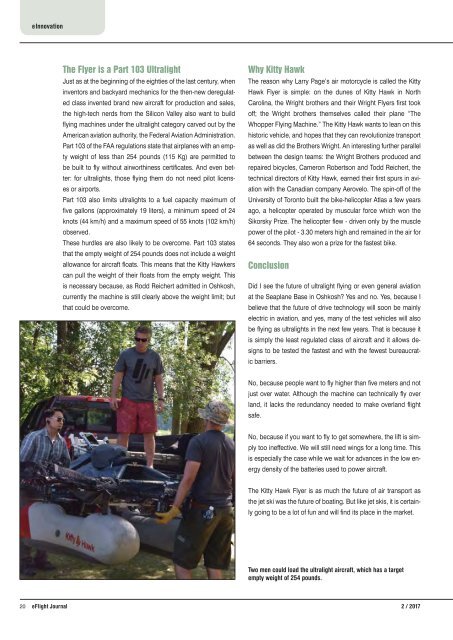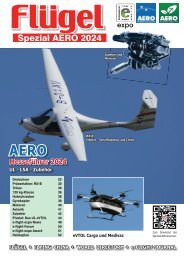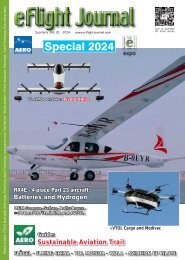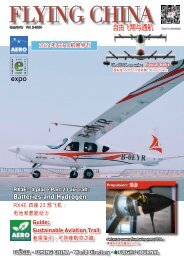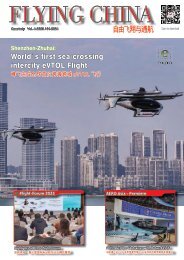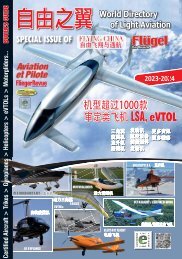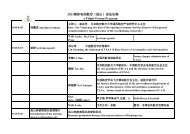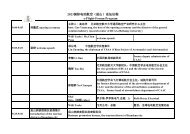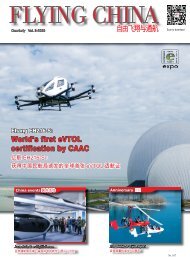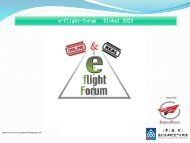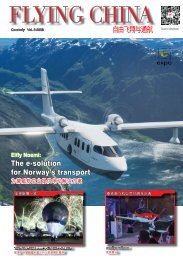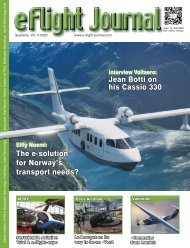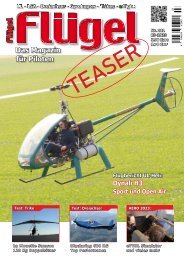efJ_02-2017-smversion2018n1web41pages
Create successful ePaper yourself
Turn your PDF publications into a flip-book with our unique Google optimized e-Paper software.
e Innovation<br />
The Flyer is a Part 103 Ultralight<br />
Just as at the beginning of the eighties of the last century, when<br />
inventors and backyard mechanics for the then-new deregulated<br />
class invented brand new aircraft for production and sales,<br />
the high-tech nerds from the Silicon Valley also want to build<br />
flying machines under the ultralight category carved out by the<br />
American aviation authority, the Federal Aviation Administration.<br />
Part 103 of the FAA regulations state that airplanes with an empty<br />
weight of less than 254 pounds (115 Kg) are permitted to<br />
be built to fly without airworthiness certificates. And even better:<br />
for ultralights, those flying them do not need pilot licenses<br />
or airports.<br />
Part 103 also limits ultralights to a fuel capacity maximum of<br />
five gallons (approximately 19 liters), a minimum speed of 24<br />
knots (44 km/h) and a maximum speed of 55 knots (1<strong>02</strong> km/h)<br />
observed.<br />
These hurdles are also likely to be overcome. Part 103 states<br />
that the empty weight of 254 pounds does not include a weight<br />
allowance for aircraft floats. This means that the Kitty Hawkers<br />
can pull the weight of their floats from the empty weight. This<br />
is necessary because, as Rodd Reichert admitted in Oshkosh,<br />
currently the machine is still clearly above the weight limit; but<br />
that could be overcome.<br />
Why Kitty Hawk<br />
The reason why Larry Page’s air motorcycle is called the Kitty<br />
Hawk Flyer is simple: on the dunes of Kitty Hawk in North<br />
Carolina, the Wright brothers and their Wright Flyers first took<br />
off; the Wright brothers themselves called their plane “The<br />
Whopper Flying Machine.” The Kitty Hawk wants to lean on this<br />
historic vehicle, and hopes that they can revolutionize transport<br />
as well as did the Brothers Wright. An interesting further parallel<br />
between the design teams: the Wright Brothers produced and<br />
repaired bicycles, Cameron Robertson and Todd Reichert, the<br />
technical directors of Kitty Hawk, earned their first spurs in aviation<br />
with the Canadian company Aerovelo. The spin-off of the<br />
University of Toronto built the bike-helicopter Atlas a few years<br />
ago, a helicopter operated by muscular force which won the<br />
Sikorsky Prize. The helicopter flew - driven only by the muscle<br />
power of the pilot - 3.30 meters high and remained in the air for<br />
64 seconds. They also won a prize for the fastest bike.<br />
Conclusion<br />
Did I see the future of ultralight flying or even general aviation<br />
at the Seaplane Base in Oshkosh? Yes and no. Yes, because I<br />
believe that the future of drive technology will soon be mainly<br />
electric in aviation, and yes, many of the test vehicles will also<br />
be flying as ultralights in the next few years. That is because it<br />
is simply the least regulated class of aircraft and it allows designs<br />
to be tested the fastest and with the fewest bureaucratic<br />
barriers.<br />
No, because people want to fly higher than five meters and not<br />
just over water. Although the machine can technically fly over<br />
land, it lacks the redundancy needed to make overland flight<br />
safe.<br />
No, because if you want to fly to get somewhere, the lift is simply<br />
too ineffective. We will still need wings for a long time. This<br />
is especially the case while we wait for advances in the low energy<br />
density of the batteries used to power aircraft.<br />
The Kitty Hawk Flyer is as much the future of air transport as<br />
the jet ski was the future of boating. But like jet skis, it is certainly<br />
going to be a lot of fun and will find its place in the market.<br />
Two men could load the ultralight aircraft, which has a target<br />
empty weight of 254 pounds.<br />
20 e Flight Journal 2 / <strong>2017</strong>


